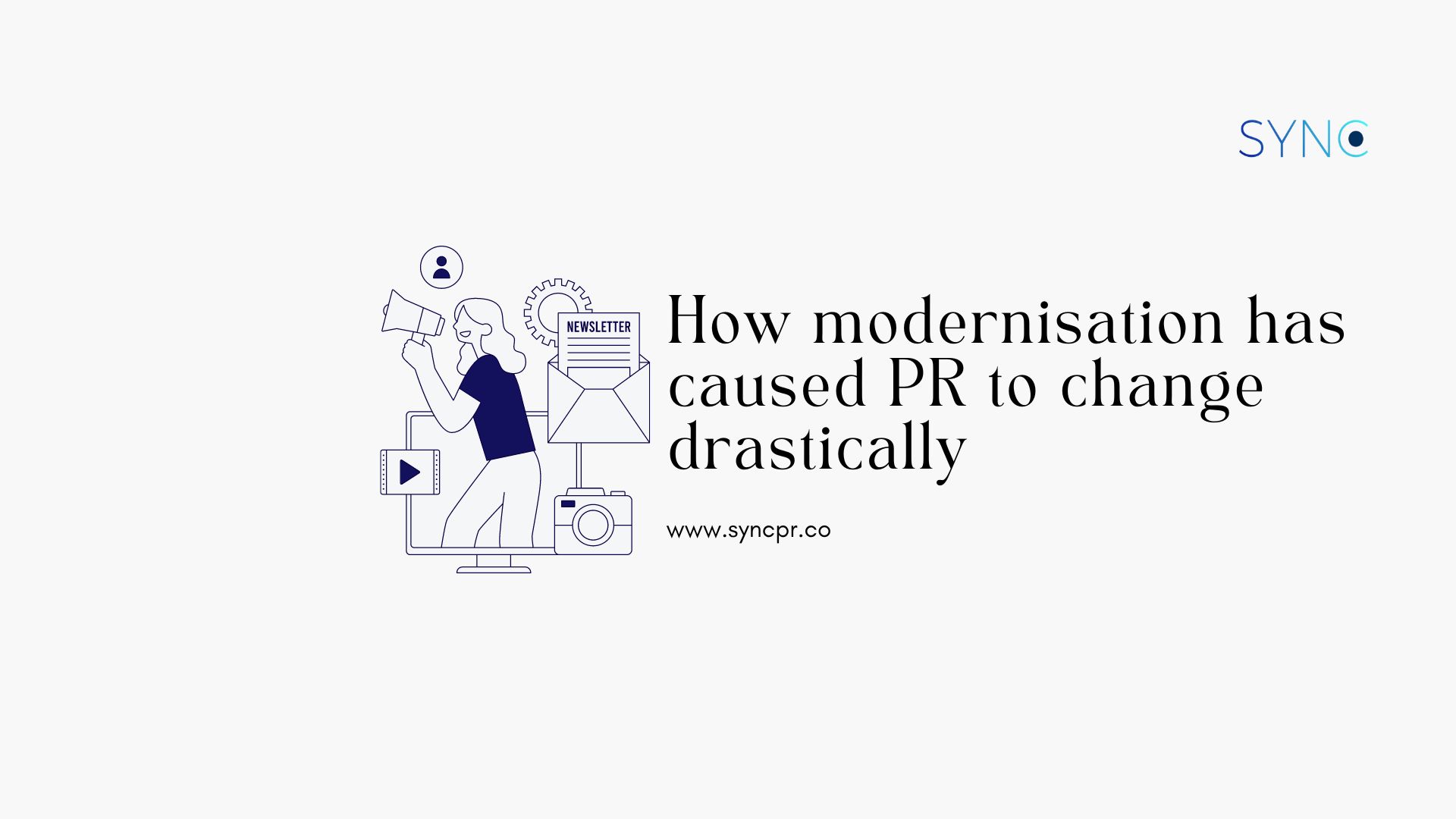In recent times, PR has experienced a profound transformation, largely due to rapid technological advancements and evolving societal norms. What was once a field characterised by traditional methods like press releases and in-person media engagements has changed dramatically due to modernisation.
Today, public relations professionals operate in a fast-paced digital environment where social media, real-time communication, and data-driven strategies are crucial. This evolution has reshaped how organisations connect with their audiences, manage their reputations, and handle crises. The shift underscores the industry’s ability to adapt and the increasing complexity of effective communication in a constantly changing landscape. In this article, we delve into the changes in public relations methodologies and how it is more effective than traditional strategies.
The digital shift in PR
There is a transition from traditional media to digital platforms. As the digital age progresses rapidly, the fields of journalism and public relations are undergoing an unprecedented transformation. This shift is evident in how news is produced, delivered, and consumed, as traditional approaches evolve to incorporate modern technologies.
Before social media, public relations efforts were largely confined to traditional media outlets such as newspapers, radio, and television. These channels, while influential, offered limited opportunities for real-time engagement and direct interaction with the public. Digital platforms and social media communication became instantaneous and interactive, evolving from traditional journalism and public relations. As a consequence of the shift, citizen journalism and user-generated content have increased the power of information, moving towards a more democratised information dissemination, enhancing transparency and accountability. This shift has made strategies more agile and responsive, as messages can be crafted, shared, and modified in real time based on immediate feedback and changing circumstances. As such, this has caused several key changes due to social media involvement.

Social media enables brands to interact directly with their audience, fostering two-way communication between both parties. This interaction builds stronger relationships, addresses customer concerns, and gathers valuable insights from public sentiments. While strengthening communication with your target audience is a key pillar in reinforcing trust and loyalty, social media is multifaceted in handling other strategies as well. These strategies include influencing and active monitoring. By engaging with key opinion leaders (KOL) of the industry and publicly respected influencers, the created content allows you to communicate key brand messages to your audience, adding weight to the message. Additionally, thanks to the features of social media, businesses can keep customers informed on the latest news and trends from the company, allowing for prompt crisis management.
Innovations in storytelling and content marketing
The advancement of storytelling in the digital era has profoundly influenced how industry professionals develop and communicate their messages. While traditional methods, such as press releases, were once the norm, they have now evolved into more engaging and interactive formats. Studies have shown that storytelling is a highly effective strategy in public relations, influencing public perceptions, developing brand identities, and creating bonds with audiences. It highlighted how people are naturally drawn to narratives, which can emotionally engage them, improve brand recall, and set organisations apart from their competitors. On that note, how has storytelling changed over time?
Previously, brand storytelling was primarily done through traditional media channels such as newspapers, magazines, radio, and television. Stories were often crafted and delivered through press releases and TV commercials to the audience. Today, however, storytelling spans a diverse range of digital platforms including social media, websites, blogs, podcasts, and video streaming services. This shift allows for more dynamic and interactive storytelling formats, more fitting for bite-sized video content to impact younger audiences.
Storytelling was predominantly text-based or visual. They were often constrained by the limits of these formats. However, storytelling today utilises a variety of multimedia formats including videos, infographics, interactive content, and live streams. This variety allows brands to create more engaging and immersive experiences. These stories were also generally crafted for broad audiences in the beginning, but advancements in data analytics and targeting technology enabled brands to personalise content tailored to individual preferences.
The ethical considerations
Ethics are an important pillar of the public relations industry. Professionals working in this esteemed industry are not only storytellers but they are also responsible for the trust and credibility of a company to the public. In an era where communication is instantaneous spanning across continents, there are major concerns about ethical practices, with customers being more ethically aware than previous generations.
Modernisation has led to a populace that is more ethically and environmentally conscious, with the actions of companies under scrutiny more than ever before. Naturally, this led to the development of ethical standards, where public relations falls under the general umbrella of the industry’s codes of ethics. These codes aimed to provide guidelines on honesty and transparency. This eventually led to the formation of corporate social responsibility (CSR). CSR has now become a significant aspect of the industry, where ethical considerations have expanded to include a brand’s social and environmental impact.
Looking for more information on the ethical considerations? Find it here.
The use of artificial intelligence and automation
Artificial Intelligence (AI) and automation are revolutionising public relations by simplifying processes, improving decision-making, and customising communication. With ongoing technological advancements, industry experts are progressively utilising these tools to boost efficiency and effectiveness across different facets of their work. AI tools become extremely useful for both the company and the employee, significantly reducing the amount of time and money spent on redundant tasks while cutting the amount of errors occurring.
Additionally, not only is AI extremely effective at performing tasks, but it also opens up opportunities to analyse trends and data at speeds faster than humanely possible. Providing insights into audience behaviour, sentiment, and engagement, allows professionals to predict future trends with greater accuracy, allowing the business to prepare and capitalise on them. As professionals now have access to analytics tools, this data-driven approach enables teams to strategise and optimise their outreach efforts. The development and implementation of AI have also improved content generation speed, albeit still requiring the necessary quality check by a human eye. AI can help tailor content to specific audience segments based on their preferences, ensuring the content that has been generated reaches the intended audience.
What’s next?
All in all, the dramatic shift in the industry illustrates the rapid evolution of communication in the digital era. The transition from traditional practices to contemporary methods has significantly changed how public relations professionals connect with audiences, handle reputations, and implement strategies. Technological advancements like AI, automation, and social media have introduced innovative tools and approaches that improve efficiency, personalisation, and real-time interaction.
As the industry continues to evolve, embracing these changes while maintaining transparency and authenticity will be essential. This transformation not only mirrors the changing communication landscape but also underscores the need for adaptability and responsiveness. Looking ahead, the integration of new technologies and strategies promises to shape the future of public relations, presenting exciting possibilities for creativity and effectiveness.
If you would like to understand more about how PR has transformed and how it can help your business, drop us an email at hello(a)syncpr.co

